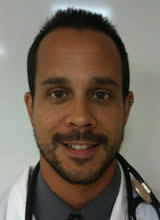
The journey of the new Port-au-Prince resembles the old, pre-earthquake Port-au-Prince, only three brief years after the disaster. Whereas Kigali travels in straight lines, Port-au-Prince swirls and meanders, constantly churning. Port-au-Prince sometimes doesn’t have a destination, but moves at full speed regardless. The senses are inundated by the many sounds and pungent smells, brightly colored cars and buildings, people moving in every direction. Four million people weaving through an area intended for little more than a million. The city ignores my presence, and, much like New York City, if I stop moving, she will swallow me whole. Her journey follows the constant up and down of the elevation in this mountainous city, never quite moving on flat ground.
The biggest change in the journey of the city is the increasing number of cars, and the appearance of motorcycles. Cars are now jammed up against one another, and fender benders are so common that they are not even a reason to dismount from the car. Motorcycles whizz by sidewalks, weave around traffic, and scatter pedestrians. New deluxe buses, named “Obama” ostensibly because they were donated by the US government, pack dozens of people onboard and consume two lanes of space on the road, spewing hot exhaust on the smaller cars below.
There are few traffic lights, and those that exist are taken as a suggestion of how to handle the intersection. The only way to cross the main thoroughfares is to inch across one lane at a time, playing chicken with the oncoming traffic, daring them to broadside the vehicle. Surprisingly, drivers expect cars to cut across the road, and they usually brake, stopping within a foot, but allowing the crossing car to continue on its course. The give and take two-step of opposing cars occurs at each intersection, replacing the need for traffic signs, a functional form of self-governance on the streets of Port-au-Prince.
The commute to work is not merely sitting in a car, but it is a physical activity of holding on, sliding around and playing games with the windows, all while sitting in the back of a Land Cruiser with sideways-facing bench seating. Staring out at the world as we pass along makes me carsick so I sit side saddle, looking forward through the windshield and holding on to the seat as it jabs into my side with each bump, almost like riding a mechanical bull. The air conditioning in our car does not work, and we choose between the stifling heat of a car with closed windows and choking on the dust from the road and smoke from old, rickety cars. The choice changes along the way, depending on the amount of traffic kicking up dust; windows are rolled up or slid shut as we pass a line of cars, and then opened again when the soupy air inside becomes worse than the clearing air outside once the cars have passed.
Traffic in Port-au-Prince turns a twenty minute ride down one of the paved arteries into an hour trip down short cuts and side roads. Since there are but a few principal roads, all the cars utilize them, and they become parking lots. The roads are single lane in each direction, but during times of severe traffic, cars pass in either direction down an imaginary third lane directly in the middle of the street. SUVs owned by government officials bear the license plate with the designation “Officiel”, and they cruise through traffic with tinted windows, sirens, and flashing lights along the dashboard. The official status allows the civilian-owed SUVs to travel down the magical third lane without interruption from the police, bypassing traffic and essentially cutting the lunch line. Adventurous and impatient non-official drivers always follow them, using the official vehicles as a lead blocker, turning on their flashing hazard lights to pretend that they are part of the caravan. The rest of us simply pull the parking brake and wait for the next chance to inch forward, staring at the line of brake lights in front.
Port-au-Prince has few paved roads, and of all different types: asphalt, concrete, interlocking block. They’re old and inconsistent and cavernous potholes slow traffic down as the cars climb down from asphalt down to the limestone dirt at the bottom and back up again. During the dry season the dust rises as cars accelerate along the dirt roads and in rainy season the mud is so thick that the roads suction onto the tires as they roll through. The signs of progress are the men at work along the side of the road, digging trenches for drainage and covering them with concrete sidewalks, a novelty in a city that is not pedestrian-friendly.
Cars and motos rarely go fast enough to match the pace of the city; the sheer volume of vehicles, origami traffic patterns, and the constant blaring of car horns is what brings her to life. I wade through the swirl of Port-au-Prince, an insignificant speck amidst the chaotic ballet of cars and motorcycles, people and animals. The city embodies the culture of Haiti, a vibrant mixture of Latin America, Africa, France and the USA. So close to Miami, but truly a world apart. The city is so alive that you can feel the pulse, hear the heartbeat thump. Each minute that passes is a complete sensory experience, jolting all five senses and letting your body know, through every single nerve, that you are alive.
Vincent DeGennaro is an internal medicine doctor and a global public health specialist at the University of Miami’s Department of Medicine and works part time in Haiti with the nonprofit Project Medishare. See his An American Doctor in Haiti blogs.